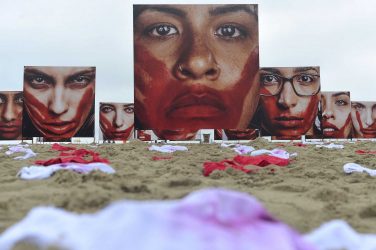 More than half the transplant surgeries in Latin America are performed in Brazil, and the nation’s most renowned hospital for transplants is in Porto Alegre, in the south of the country.
More than half the transplant surgeries in Latin America are performed in Brazil, and the nation’s most renowned hospital for transplants is in Porto Alegre, in the south of the country.
The hospital, Dom Vicente Scherer, forms part of Santa Casa de Misericórdia, a health complex founded by clerics in 1803.
Each year, more than 400 transplant surgeries are performed here, but the goal for doctors is 500.
People from all over Brazil come to Porto Alegre looking for transplants. They come from states like Paraná, Santa Catarina, Brasília, São Paulo, Rio de Janeiro and even from Amapá, in the extreme north of the country.
Dr. Valter Duro Garcia, coordinator of transplants at Santa Casa and former president of the Brazilian Association of Transplants of Organs, said it was here that the first cornea transplant in Brazil was performed, in 1938.
For almost five decades, Santa Casa was the pioneer in kidney and pancreas transplant surgeries.
In 1989, Santa Casa became the first hospital in Latin America to perform a lung transplant. Since then, 80 percent of Brazil’s lung transplants have been done at Santa Casa.
As for other organs, 50 percent of transplants in Brazil are performed in the south. Dom Vicente Scherer handles transplants of all kinds, and this month the hospital will inaugurate a stem cell center.
Long Lines
But waiting lists are long. In Rio Grande do Sul, approximately 1,000 are waiting for cornea transplants. For a new kidney, there are 1,400 in line, a liver 300, a lung 70, and a heart 40.
Garcia explains that the surgeries that have the longest lists – cornea and kidney transplants – are not matters of life or death. Without a cornea, patients may be partially blind, and without a kidney, they require dialysis, but they will survive. And so they wait.
The long waiting lists are a negative in Brazil, especially when it comes to the most critical surgeries. And Garcia said there is no reason for it.
Each year, a million Brazilians die. Only 1 percent can donate major organs, such as a heart or a kidney, but the other 99 percent could be cornea donors, if the eye part was removed up to six hours after death.
However, this doesn’t happen, and doctors are doing what they can under the present circumstances. Transplant teams are working to clear the waiting list for cornea surgeries in one year.
Santa Casa is Brazil’s leader in donations. When a patient dies at the hospital, social workers talk to the family about donation. For corneas, there is one donor each day.
It is surprisingly simple to be a donor. Most deceased are eligible, barring people who have died from HIV, cancer, a serious infection or who were older than 80. So, why are there so few donors?
In Brazil, only half of cases in which the patient is brain dead are recorded. In 35 percent of these cases, families don’t approve the donation because they don’t believe in medical technology or they imagine the organs will be sold on the market.
Since 1997, Brazil has emulated the Spanish model on transplants. Spain is unique in the world as their waiting lists are stabilized. In Brazil, the newly created National System of Transplants trains thousands of people to detect potential donors in hospitals.
The results are visible, and the number of donors has grown. Before the donor-finding program, three people in a thousand were donors, compared to 35 in a thousand in Spain. Today, that number has more than doubled to seven in a thousand. But the number is still small. People must realize that donating organs saves lives.
A Happy Patient
Bruno dos Santos was a child when he discovered he needed a liver transplant. Suffering from cystic fibrosis, he lived in Bauru, in the state of São Paulo.
His mother, Sílvia Regina Gonçalves Miguel, started looking for a treatment for her son. They traveled all over – to Botucatu, Campinas, and Florianópolis – and arrived in Porto Alegre four years ago.
They made frequent trips from Bauru to Porto Alegre for two years. Finally, they received the good news: Bruno would get his transplant.
And the donor would be a living person: his stepfather, who would donate a part his own liver. It was the first transplant between two living people for a child with cystic fibrosis.
Bruno and Sílvia grew to like Porto Alegre, and four years after the first diagnostic, the family decided to move to southern Brazil, and the city that saved the kid received both with open arms.
Ana Maria Brambilla is a graduate student in communications and a journalist from Porto Alegre, Brazil. Your comments are welcome at ambrambilla@terra.com-br.
Originally published at Ohmynews – http://english.ohmynews.com/










